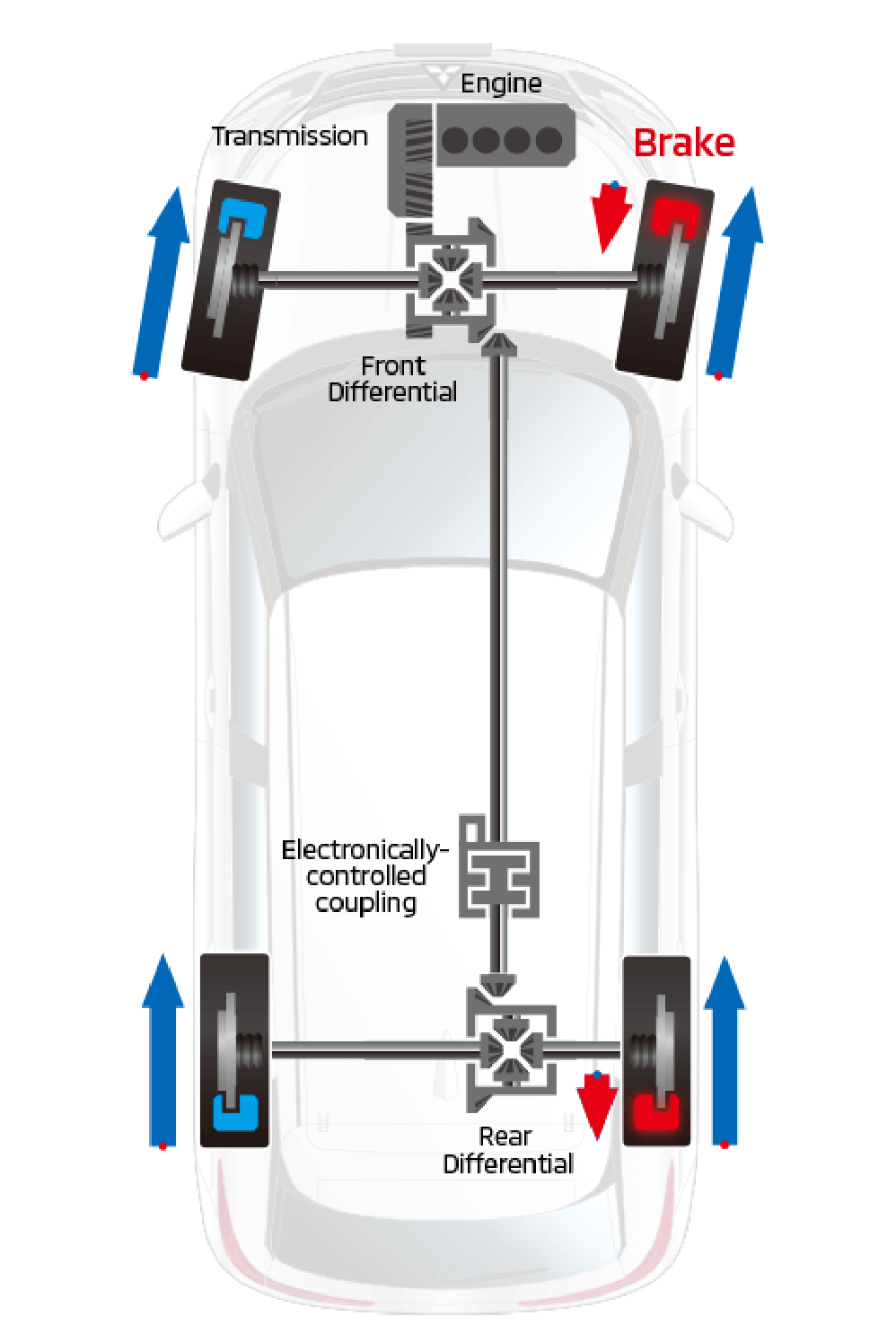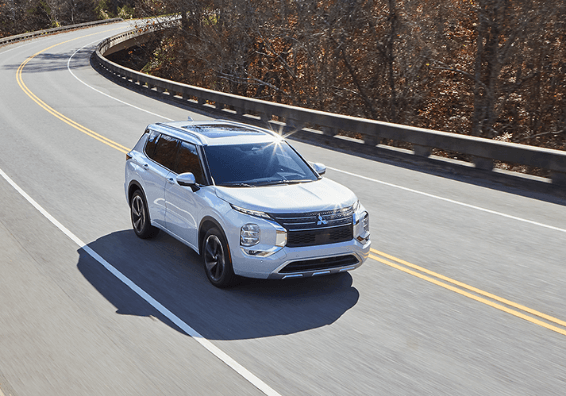Unique S-AWC (Super-All Wheel Control) enables anyone to drive comfortably with peace of mind
We utilized the 4WD technology developed by our predecessor companies through the four-wheel drive prototypes and the Mitsubishi Jeep. Throughout the years, we evolved and optimized the 4WD system in our vehicles such as pickup trucks, cross-country SUVs, and passenger cars, enabling customers to drive comfortably anywhere with peace of mind.
Our technology is refined through rigorous testing in various weather conditions and on various road surfaces. Meanwhile, we also honed our skills in motorsports such as the Dakar Rally and the World Rally Championship.
Among various 4WD systems, the S-AWC (Super-All Wheel Control) best embodies the ideal of MITSUBISHI MOTORS. The system dramatically improves the handling and stability of a vehicle by continuously and seamlessly controlling vehicle movements during accelerating, cornering and braking without giving driver a sense of discomfort. The S-AWC demonstrates an excellent driving performance on slippery road conditions such as off-road and in snow, and also supports drivers to drive comfortably on a daily basis. We will continue to enhance S-AWC and other 4WD systems in pursuit of making vehicles that can be driven comfortably anywhere with peace of mind.
Electronically-controlled S-AWC
We have adopted the latest Super-All Wheel Control (S-AWC) system based on the electronically-controlled 4WD, which detects the driver’s maneuvering and vehicle behavior, and enables precise control of the rear driving force.
Focusing on general usage conditions, the S-AWC pursues the stability that allows the vehicle to run safely on slippery surfaces such as snowy roads and the steering performance that allows cornering true to the driver’s intention. The system combines the brake activated AYC, electronically-controlled 4WD, ASC, and ABS.
The brake activated AYC generates a yawing moment by automatically and weakly applying the inside brake when cornering. The S-AWC accurately grasps the driver’s maneuvering and driving situation by using sensors to detect the steering angle, yaw rate, driving torque, brake pressure, and wheel speed. Based on the information, brake activated AYC generates a yawing moment when turning, appropriately following the driving line as the driver intends. The electronically-controlled 4WD optimally distributes the torque transferred to the rear wheels, while Active Stability Control (ASC) and Anti-lock Braking System (ABS) keep the running stability of the vehicle.
In the gasoline model of the Outlander, a hydraulic clutch actuated by electric motor is used as a center coupling device to allocate torque to the front and rear. Since this puts strong constraints on both the front and rear wheels when the car is stopped, driving force is generated in the rear wheels the moment it kicks into gear, exerting the power of 4WD. This harnesses even more power in particularly severe conditions, such as starting the engine on frozen uphill roads. Brake activated AYC which was previously only applied on the front axle is now also applied to rear axle, distributing brake control to all four wheels. This reduces the braking force on each individual tire, making it possible to utilize AYC to even greater effect on slippery roads.
System Configuration of the Outlander gasoline model

Drive modes

Drivers can choose drive modes for the motion characteristics of the vehicle, optimized for particular driving styles and situations. The six modes are Normal mode for standard driving, Tarmac for sporty driving on paved surfaces, Gavel for high traction and stability on unpaved roads, Snow for slippery surfaces such as snowy roads, Mud to increase road handling on muddy roads and in deep snow, and Eco mode which helps to increase fuel efficiency.